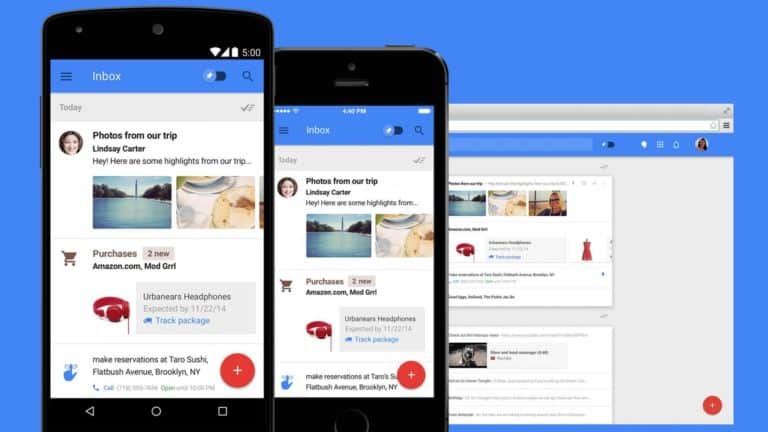It will take a while, but Google has already announced that it will stop using the Inbox app. The mail app was described at launch as the future of email, but now appears to have no future. Just four years after launch, the plug is pulled out.
Inbox was equipped with convenient and unique features. There were mail bundles, where similar messages were grouped and important information was emphasized. That way, according to Google, people could easily see what the times of their flight were, for example. Inbox was also equipped with Highlights highlighting important mails, Reminders for upcoming events and Assists, reminding the user to look for some extra information about a topic.
No future
But at the end of the day, Inbox didn’t manage to get enough of a kick in the arm to have a future. It even seemed increasingly as if Google had come to see the service as a nice place to experiment. After all, a number of features of Inbox have been brought to the new version of Gmail, which Google showed to the world last April.
This suspicion is now partly confirmed by product manager Matthew Izatt, who writes that Inbox was an ideal place to experiment. But as Google looks to the future, we want to have more focus, which will help us bring the best mail experience to everyone.
Also Izatt emphasizes in his blog about stopping Inbox that many of the same functions that you have come to like from Inbox, complemented by a lot of newer functions come to Gmail. How many people will eventually be disappointed is not certain. Gmail has a market share of 27 percent, but Inbox remained a niche product at launch despite a big hype. For the people who use it, there is a manual on how to switch to Gmail.
As of March, Inbox is no longer usable.
This news article was automatically translated from Dutch to give Techzine.eu a head start. All news articles after September 1, 2019 are written in native English and NOT translated. All our background stories are written in native English as well. For more information read our launch article.